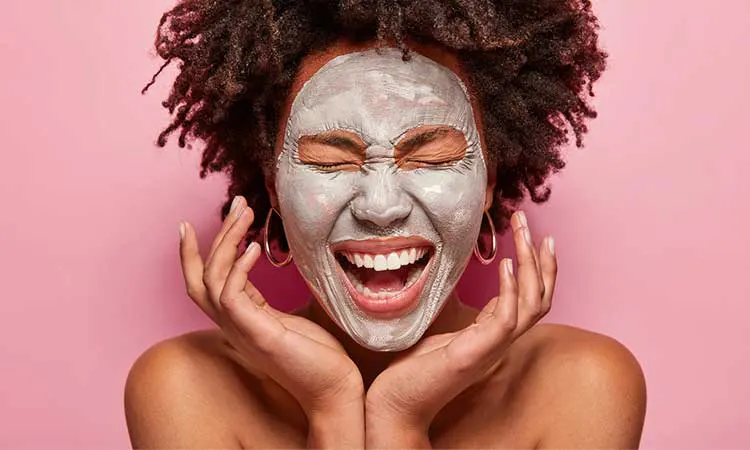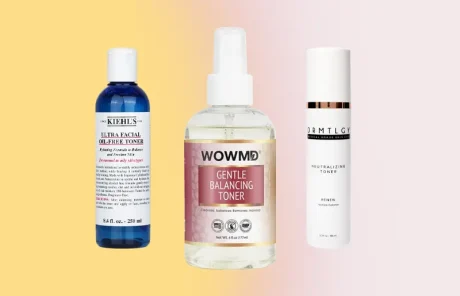Oily Skin Overview
If you’re plagued by oily skin, you’re not alone! This is a frequent complaint that brings patients into the dermatology office. Oily skin is caused by an overproduction of sebum. Anything from stress to hormonal fluctuations can cause your body to go into overdrive.

1. Clay masks
If you have very oily skin, use one at least once a week, but no more than than three times a week, and for 15 minutes max each time. The clay absorbs extra sebum; bentonite clay is especially good for this. The important thing is you want to moisturize afterwards. SkinCeuticals Clarifying Clay Mask contains bentonite clay and is a great one to stock up on.
2. Moisturizers
As mentioned above, it’s imperative to moisturize your skin even if you feel you already have very oily skin. It may seem counter-intuitive, but if you’re skin gets too dry following an oil-reducing treatment like a clay mask, the body will then start to ramp up sebum production.
Find a moisturizer that won’t clog your pores. An example would be CeraVe PM which contains hyaluronic acid to hydrate your skin, ceramides to lock in the moisture, and does not contain petrolatum (which will clog your pores). And don’t let the name containing “PM” fool you, it can be applied anytime, and I recommend applying this or other similar moisturizers and night creams containing hyaluronic acid both morning and night. In winter when the weather is extra dry and cold, you may even want to apply three times a day – there’s no such thing as applying it too often!
3. Blotting papers
Pretty self-explanatory. These soak up the extra oil on your skin, and so before a big meeting or a date, these can help give you the quick fix you need to reduce the excess shine. Keep a box in your purse or the glove compartment of your car. Clean & Clear Oil Absorbing Sheets are one brand that’s easy to find in your local retail pharmacy.
4. Glycolic acid washes
Use a glycolic wash every am to exfoliate your skin and remove the excess oil that’s built up overnight. Don’t forget to apply a moisturizer afterward though!
5. Retinoids
Retinoids are one of my favorite products. Not only do these Vitamin A derivatives help reduce acne lesions, but they also are the main staple of any anti-aging skin care routine to keep your skin looking youthful.
They reduce the appearance of frown lines and forehead wrinkles by promoting cell turnover and building up collagen, and they can significantly reduce signs of photodamage as discussed in this article in the Clinics of Dermatology [1].
The best time to use a retinoid is at night since the daytime sun can deactivate it. With retinoids though, less is more; you only want to use a pea-sized amount to cover the entire face. And because it can take a few weeks for your skin to tolerate it (those first few weeks you should expect some facial redness and flakiness), I recommend building up slowly and starting with only using the product two to three nights a week. It will also make your skin more sensitive to the sun, so it’s important to wear daily SPF 30+.
Retinols, a naturally-occurring retinoid, can be found in many over the counter products, like Drunk Elephant’s A-Passioni Retinol Cream or the Neocutis Nouvelle Plus Retinol Correction Intensive Anti-Aging Cream. Retinols are considered to be cosmeceuticals, not drugs, and as such are not approved by the FDA and are generally regarded to be of weaker potency than prescription-strength retinoids like tretinoin, a retinoic acid.
Differin gel, which contains 0.1% adapalene, is the only FDA-approved retinoid that is available over the counter. It was prescription-only up until a few years ago. With retinols, Vitamin A must be broken down by the body into an active form to become useful. But the benefit of using adapalene is that it is already in the active form, and so many dermatologists regard it as being more efficacious than retinols.
Although the effect of retinols may not be as strong as prescription retinoids, they are a good place to start if you are not currently using any retinoid products whatsoever or your skin tends to get irritated easily. I also recommend applying a moisturizer prior to the retinoid if you have sensitive skin or you’re getting very dry, otherwise, the moisturizer should go on afterward.
Do not use retinoids if you’re pregnant or breast-feeding.
6. Sunscreen
Since sunscreen should be a part of everyone’s daily routine, and we’ve all had bad experiences using sunscreens that make our face look greasy and overly-shiny, I wanted to discuss a couple of brands that don’t: Elta MD Clear and Neutrogena Ultra Sheer Dry-Touch. Elta MD Clear contains zinc oxide, a physical blocker, as well as octinoxate, a chemical blocker. The Neutrogena Ultra Sheer contains chemical blockers only. For skin of color, this may be the preferred choice since sometimes the physical blockers can make the skin look a bit chalky. The important thing to know is that all chemical blockers need to be applied 30 minutes prior to sun exposure for them to work, unlike physical blockers which work right away to deflect the sun’s rays.
7. Niacinamide
Niacinamide, otherwise known as Vitamin B3, or nicotinamide, has been shown to reduce sebum production. More research still needs to be done, but according to this study [2], published in The Journal of Cosmetic and Laser Therapy, “Differences in facial shine and oiliness with the active niacinamide were apparent.” Remember that CeraVe PM moisturizer I mentioned earlier? It contains niacinamide as well.
I don’t know about you, but I prefer a simple skin care routine so I will actually stick to it. Consistency is important. This routine doesn’t get much easier: you basically wash your face in the shower with glycolic acid in the am, then apply a moisturizer containing hyaluronic acid and top off with sunscreen; at night you apply a retinoid and your moisturizer, and that’s it! And if desired you can do the clay mask treatments a couple of times a week as well. Over time you’ll see the benefits of all these products combined to reduce the appearance of oily skin while still keeping your skin looking youthful and bright.




 This article changed my life!
This article changed my life!
 This article was informative.
This article was informative.
 I have a medical question.
I have a medical question.

 This article contains incorrect information.
This article contains incorrect information.
 This article doesn’t have the information I’m looking for.
This article doesn’t have the information I’m looking for.